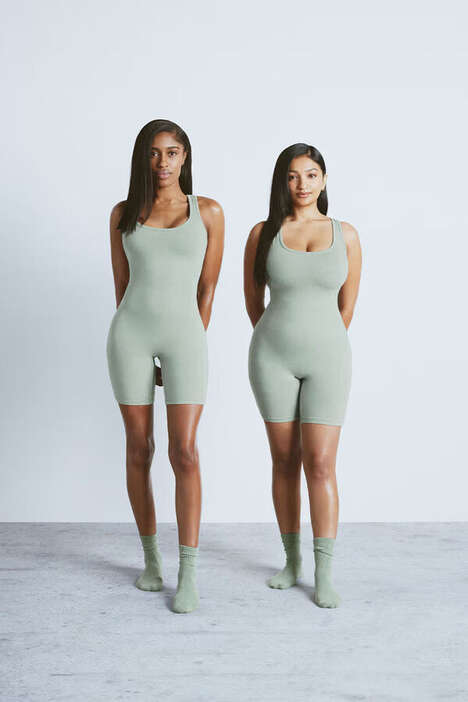Reinventing Kids Fashion
An Interview with Albert Wang, CEO of PatPat
 With an engineer’s precision and entrepreneur’s daring, Albert Wang co‑founded PatPat to overhaul family fashion. Frustrated by steep prices and limited choices, he and Ken Gao harnessed Silicon Valley know‑how to build a tech‑first platform that speaks directly to parents’ needs. Since 2014, Albert has guided PatPat’s evolution from a single app into a global ecosystem serving over 21 million customers in 140 countries, leveraging AI, data‑driven design, and streamlined logistics to deliver 30,000+ styles. Under his leadership, PatPat has reimagined children’s apparel—making it accessible, personalized, and innovative—and continues to set the bar for DTC retail in the digital age.
With an engineer’s precision and entrepreneur’s daring, Albert Wang co‑founded PatPat to overhaul family fashion. Frustrated by steep prices and limited choices, he and Ken Gao harnessed Silicon Valley know‑how to build a tech‑first platform that speaks directly to parents’ needs. Since 2014, Albert has guided PatPat’s evolution from a single app into a global ecosystem serving over 21 million customers in 140 countries, leveraging AI, data‑driven design, and streamlined logistics to deliver 30,000+ styles. Under his leadership, PatPat has reimagined children’s apparel—making it accessible, personalized, and innovative—and continues to set the bar for DTC retail in the digital age.1. What does innovation mean to you? For me, innovation is about solving real problems in smarter ways.
At PatPat, we’re always asking how we can make things better, faster, more accessible for families. Whether it’s technology, design, or even logistics, it has to be practical. If it doesn’t improve the customer experience or move us forward as a team, it’s not innovation—it’s just noise.
2. How does your team generate new ideas?
Some of our best ideas start in a brainstorm that is cross-functional, fast-paced, and always customer-first. At the same time, we’re constantly analyzing what’s happening in the market, search trends, social buzz, what parents are talking about in real-time. It’s not just about spotting what’s hot, but understanding why. Once something shows promise, we move fast. We’ll prototype, test, and iterate sometimes within days. The goal isn’t perfection out of the gate, it's progress, momentum, and learning quickly so we can build better and faster for our audience.
3. Do you have any specific rituals for resetting your team to be creative?
We don’t rely on rituals. What works is staying curious and competitive. We constantly look at what others are doing inside and outside our category. If someone’s doing it better, we want to know why. We also push the team to test new tools, especially AI. If there’s a way to move faster, reduce manual work, or improve how we build, try it. No long debates. Just test, learn, and move. Creativity isn’t something you wait for. You create momentum, and the ideas follow.
4. How are you leveraging AI in your innovation process?
AI is integrated into almost every part of our workflow now. From a product standpoint, we’re using it to identify trends earlier, speed up our design process, and fine-tune what styles we produce and when. It’s helping us move from instinct to insight fast. We’re also using AI to generate standard product photography at scale. It’s not for editorial or lifestyle, but for core PDP imagery, it’s a game-changer. It saves time, reduces costs, and lets us launch with speed and consistency. AI lets us operate with more precision across the board whether it’s inventory, personalization, or customer experience. It’s not just a tool, it’s part of how we think and build now.
5. What are some unexpected benefits or challenges you have encountered with AI adoption?
The biggest win? Speed. AI’s helped us cut our production time significantly. But the flip side is making sure we don’t lose the human touch. Our brand is built on emotional connection—family, memories, childhood moments—so the challenge is using AI without losing that warmth. It’s a constant balance.
6. How do you identify trends?
We look at both data and culture. What’s trending in parenting groups, what characters kids are obsessed with, what styles are getting saved on Pinterest those are all early signals. Then we layer in real-time sales data, search volume, and feedback from our community to get the full picture. We also stay close to what’s happening in pop culture, product, and innovation not just in kidswear, but across categories. That gives us a wider lens to spot what’s next before it hits the mainstream. Another big advantage for us is our IP partnerships. We work with over 60 major licensed brands, and we’re in constant communication with their teams. We align on launches, share insights, and co-create marketing strategies so that we’re not just reacting to trends we’re helping lead them.
7. What resources does your team use to spot trends and consumer insights?
We take a mix of data and direct input from customers. We run ongoing consumer research and host focus groups with moms in our community. That kind of real-world feedback is what helps us make better decisions faster. We also use tools like WGSN to stay ahead of larger trend cycles. On the day-to-day level, we monitor Pinterest, TikTok, Instagram, and lean heavily on social listening to spot early signals. But honestly the most valuable insight still comes from listening to parents directly. When you stay close to your customer, you stay ahead.
8. What is the biggest challenge you face when innovating?
The biggest challenge is speed versus scale. We move fast, but when you're growing, not everything can move at startup pace. You have to build systems that allow for speed without sacrificing quality or efficiency. There’s also the balance between taking risks and staying focused. Not every new idea is worth chasing. We have to be disciplined about where we innovate so it actually creates value for families and for the business. Innovation’s not hard because of a lack of ideas. It’s hard because of the trade-offs.
9. Has there ever been an instance where another industry has influenced an innovation at PatPat?
Absolutely. One of our best examples is our Go-Glow collection. The idea actually came after we saw a viral glow-in-the-dark dress worn by Claire Danes on the red carpet. It had nothing to do with kidswear but it sparked something. We thought, why not bring that wow factor into everyday kids fashion? So we ran with it. We developed a glow-in-the-dark line that felt fun, playful, and totally unique to us. That’s a good example of how we pull inspiration from outside the category and move fast to turn it into something families will love.
10. What makes an innovative culture? How do you create a culture of innovation?
You need speed, ownership, and the freedom to think without limits. Innovation dies in slow environments. We move quickly on ideas, test fast, and let the data guide what sticks. If something doesn’t work, we don’t waste time we learn, pivot, and move on. We also believe great ideas can come from anywhere. Titles don’t matter. The best thinking often comes from people closest to the problem. And most importantly, you have to build a culture that isn’t afraid to fail. If people are scared to take risks, you’ll only get safe ideas. We’d rather swing big, miss, and learn than move slow and stay average.
11. Looking to the future, how will PatPat continue to be a leader in innovation?
We’re not here to follow, we're here to rethink how family fashion should work. That means getting even more innovative with the products themselves. Smarter designs. Better fabrics. Styles that solve real everyday needs for parents and kids. We’re expanding into new categories where we know families are underserved and we’re not afraid to question what’s been done before. If the standard isn’t good enough, we’ll build something better. Tech will continue to drive how fast we move, but design and function are just as important.
Featured Articles

Bra Health
Brands are incorporating health-focused technology into their bras

Sustainable Sports
Sports apparel is increasingly being made with sustainable materials

Cotton Activewear
Activewear brands are launching organic cotton apparel

Sensory Apparel
Brands design clothes to be skin-friendly for children with sensitivities